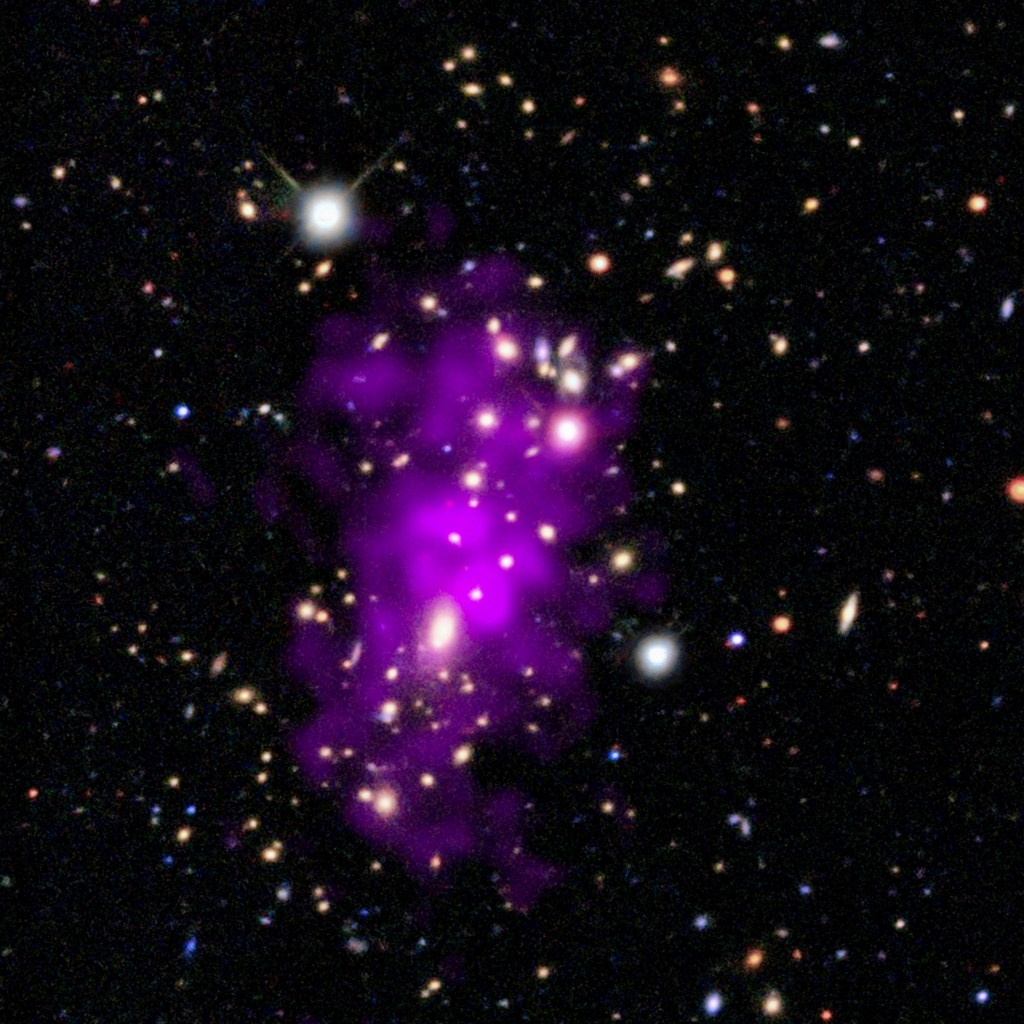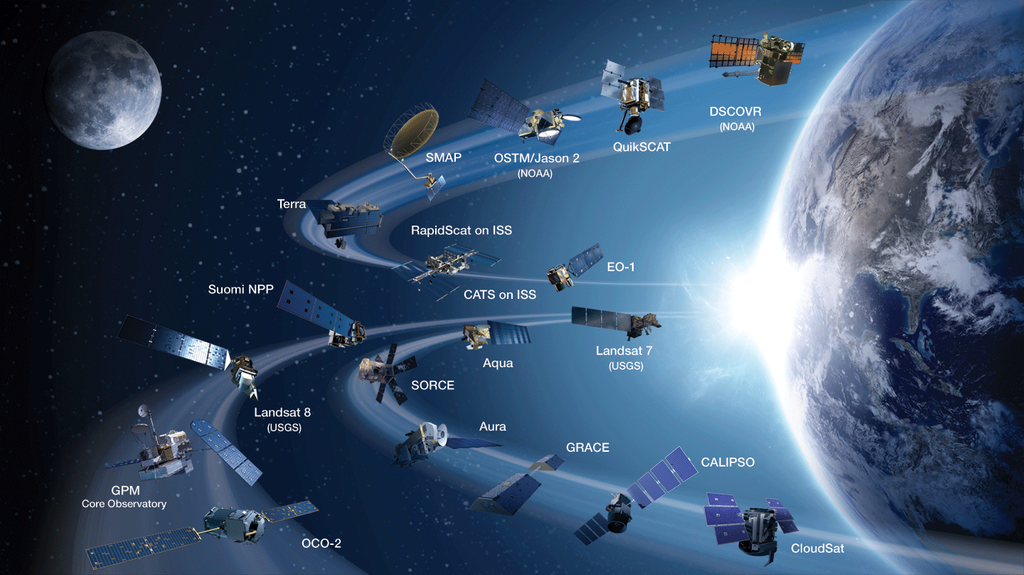1 min read
Proper Motion Path of Proxima Centauri
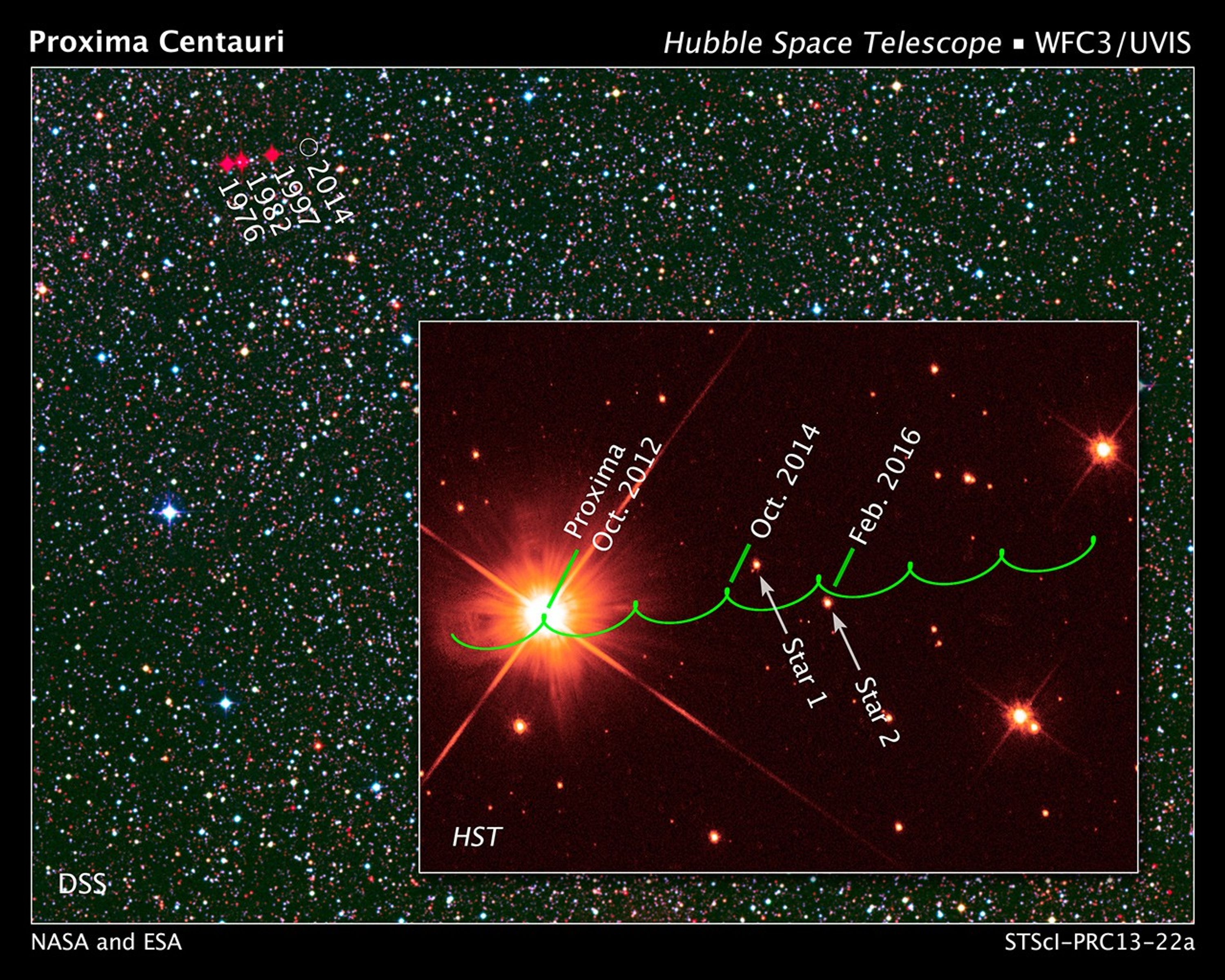
About the Object
- R.A. PositionR.A. PositionRight ascension – analogous to longitude – is one component of an object's position.14h 29m 35.0s
- Dec. PositionDec. PositionDeclination – analogous to latitude – is one component of an object's position.-62° 40' 45.99"
- ConstellationConstellationOne of 88 recognized regions of the celestial sphere in which the object appears.Centaurus
- DistanceDistanceThe physical distance from Earth to the astronomical object. Distances within our solar system are usually measured in Astronomical Units (AU). Distances between stars are usually measured in light-years. Interstellar distances can also be measured in parsecs.4.2 light-years (1.3 parsecs)
About the Data
- Data DescriptionData DescriptionProposal: A description of the observations, their scientific justification, and the links to the data available in the science archive.
Science Team: The astronomers who planned the observations and analyzed the data. "PI" refers to the Principal Investigator.The image was created from Hubble data from proposal 12985: K. Sahu (STScI), H. Bond (STScI and Pennsylvania State University), J. Anderson (STScI), and M. Dominik (University of St. Andrews) - InstrumentInstrumentThe science instrument used to produce the data.DSS (starfield) and HST>WFC3/UVIS (inset)
- Exposure DatesExposure DatesThe date(s) that the telescope made its observations and the total exposure time.October 1, 2012, Exposure Time: 175 seconds
- FiltersFiltersThe camera filters that were used in the science observations.WFC3/UVIS: F555W (V) (inset)
- Object NameObject NameA name or catalog number that astronomers use to identify an astronomical object.Proxima Centauri, Alpha Centauri C
- Object DescriptionObject DescriptionThe type of astronomical object.Nearby Star (inset)
- Release DateJune 3, 2013
- Science ReleaseRare Stellar Alignment Offers Opportunity to Hunt for Planets
- Credit

Related Images & Videos
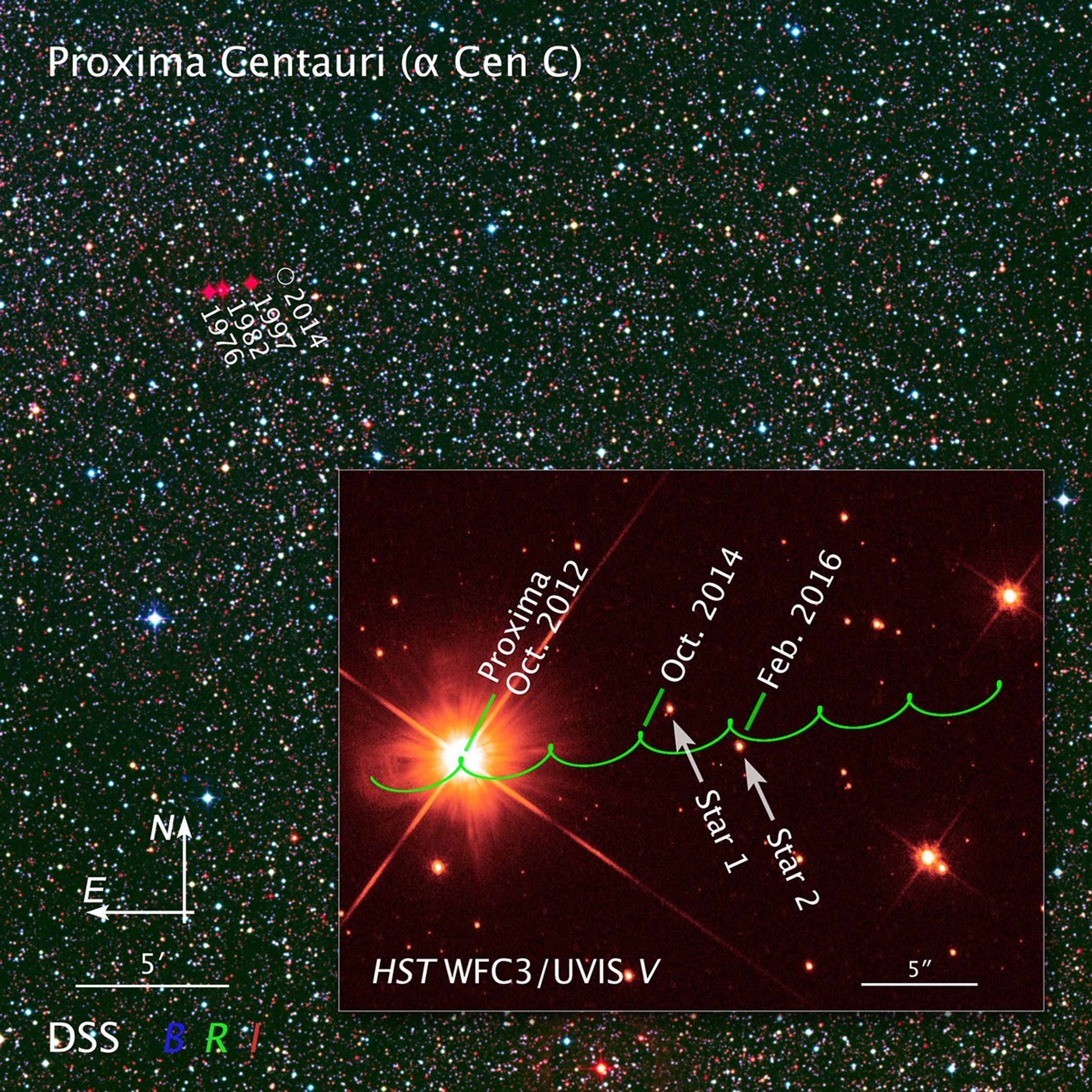
Compass and Scale Image for Proxima Centauri
This plot shows the projected motion of the red dwarf star Proxima Centauri (green line) over the next decade, as plotted from Hubble Space Telescope observations. Because of parallax due to Earth's motion around the Sun, the path appears scalloped. Because Proxima Centauri is...

Proxima Centauri Microlensing Prediction
This diagram shows the upcoming conjunction between the nearest star to our Sun, Proxima Centauri, and a distant background star. Proxima's gravitational field warps the space around it. This gravitational lensing effect distorts space like a funhouse mirror and bends the path...
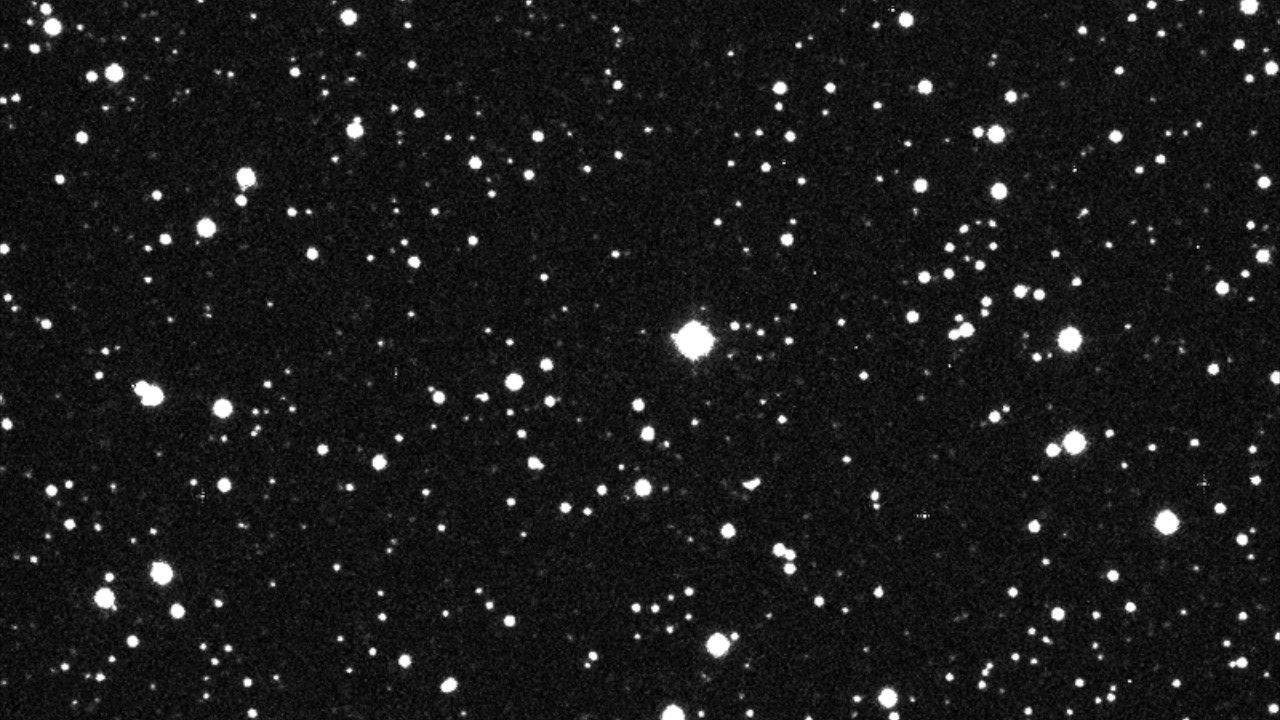
Time-Lapse Animation of Proxima Centauri's Proper Motion
This animation is assembled from 10 years of observations of the red dwarf star Proxima Centauri, the nearest star to our Sun at 4.2 light-years. Proxima has a relatively large proper motion compared to that of more distant background stars. It moves 3.85 arcseconds per year...
Share
Details
Claire Andreoli
NASA’s Goddard Space Flight Center
Greenbelt, Maryland
claire.andreoli@nasa.gov













